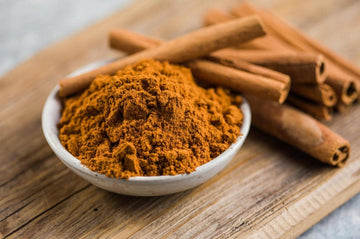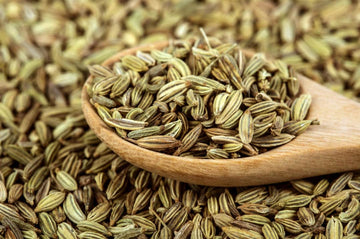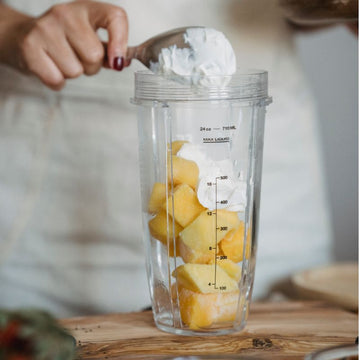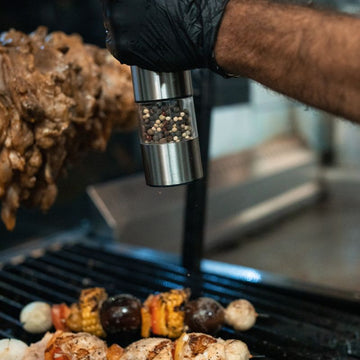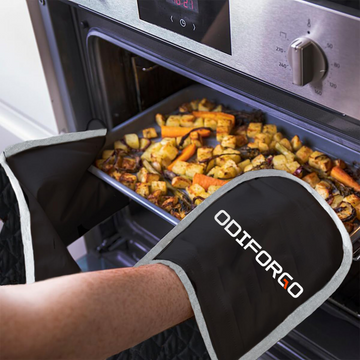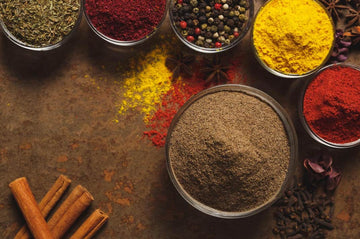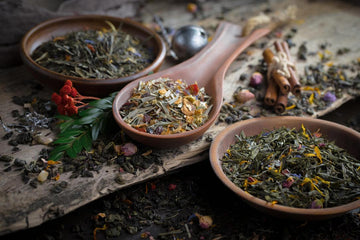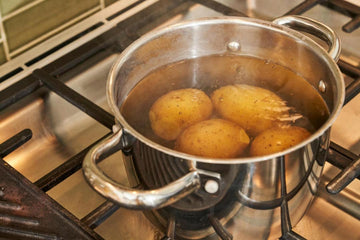Freshly ground spices simply taste different. They carry sharper aromas, richer oils, and a depth that pre-ground jars on grocery shelves often lose with time. Grinding spices is less about tradition for tradition’s sake and more about choosing flavor at its peak. Whether you’re working with a mortar and pestle, a dedicated spice grinder, or even just everyday kitchen tools, the process is straightforward but rewarding.
By learning how to do it well, you give yourself more control over the final taste of your food, from a simple soup to a carefully layered curry.
Grinding spices using mortar and pestals
Grinding spices with a mortar and pestle is one of the oldest and still most effective techniques. Unlike machines, this method doesn’t just crush a spice into powder — it allows you to control the texture, release oils gradually, and even layer flavors by combining multiple spices at different stages of grinding.
The first step is choosing the right mortar and pestle. A granite or marble set is best for hard spices like peppercorns, cloves, cardamom pods, and dried chili peppers because the rough surface grips and breaks them down efficiently. Wooden mortars are lighter but tend to absorb flavors, which is fine for soft herbs or seeds but not ideal for pungent spices you don’t want mixing. Ceramic can be used, but it chips more easily under pressure.

Once you have your tool, preparation of the spices matters. Whole spices such as coriander or cumin seeds should be lightly toasted in a dry skillet beforehand. This drives off moisture, intensifies aroma, and makes grinding easier. For cardamom, crack the pods first and discard the husks to avoid fibrous residue. Dried chilies can be cut into smaller pieces so they sit flat and break down evenly.
When grinding, technique makes a significant difference. For hard spices, place a small amount — never overload — at the base of the mortar. Use the pestle in a firm downward pressing motion, followed by a circular grinding movement. Start slowly until the spices break, then increase force as you reduce them to the texture you want. For a coarse grind, stop when the pieces are consistent but still textured. For fine powder, continue until the pestle moves smoothly without resistance, occasionally scraping down the sides to make sure nothing clings unbroken.
For layered spice mixes, timing is key. Grind harder spices first, like peppercorns or cloves, before adding softer ones such as cumin or fennel seeds. This ensures the mix doesn’t turn uneven, with fine powder hiding alongside large chunks. If you’re making a curry base, you might even grind in stages, pausing to smell the release of oils — a sign the flavors are at their peak.
Pressure control is another overlooked detail. Pressing too hard can bruise spices unevenly, while moving the pestle too lightly will only skim the surface. Aim for a rhythm where you press and rotate, keeping the pestle’s weight engaged without letting it bounce. For fibrous ingredients such as dried ginger, pounding (short, repeated strikes) works better before transitioning to circular grinding.
Finally, cleanliness matters. After each use, brush out residual powders with a dry cloth or dedicated brush. Avoid soap with porous stone mortars, as it seeps in and alters flavor later. Instead, rinse lightly and dry completely. If oils linger, grind some dry rice until it turns powdery white — this absorbs leftover flavor and cleans the surface naturally.
With practice, the mortar and pestle becomes more than a tool. It trains your hand to feel resistance, your nose to catch subtle releases of aroma, and your eye to judge texture. That tactile knowledge is something no electric grinder can replicate.
Grind spices using a spice grinder
A spice grinder offers speed and consistency that manual methods can’t always match. While the mortar and pestle excels at tactile control, an electric grinder delivers uniform results in seconds, making it ideal if you cook often or work with larger batches of spices. But like any tool, technique and handling separate a mediocre grind from a truly well-prepared spice.
The first step is choosing the right grinder. A dedicated spice grinder is best, but a clean coffee grinder can work as long as it hasn’t been used heavily for oily beans, which leave residues that alter spice flavor. Burr grinders (the kind used for coffee) give excellent precision but are slower with tough seeds. Blade grinders are the most common — fast and powerful — though they require technique to avoid overheating spices.
Before grinding, spices should be dry and sometimes lightly toasted. Toasting drives out moisture and enhances aroma while preventing clumping inside the grinder. For example, cumin, coriander, and fennel benefit greatly from a quick pan toast, while nutmeg or cinnamon sticks should be broken into smaller chunks first so the blades can handle them efficiently.
When loading the grinder, don’t overfill. Work in small batches, ideally covering the blade surface without piling too high. This ensures even contact and reduces the chance of larger pieces slipping through unground. Short bursts — pulsing rather than holding the button — give better control. Pulses let spices settle between each spin, preventing uneven textures and overheating that can dull flavors. For very fine powder, shake the grinder gently between pulses so the spice redistributes against the blades.
Texture control comes with practice. A few pulses yield a coarse grind, ideal for rubs and marinades where you want texture. Longer, sustained bursts (with shaking between) create a finer powder, suitable for spice blends like garam masala. If you’re aiming for extra smoothness, sift the powder through a fine mesh sieve, returning the larger particles to the grinder for another round.
Cleaning is critical with grinders. Spices release oils, and leaving residue behind contaminates the next grind. After each use, brush out loose particles with a soft, dry brush. To absorb stubborn oils, grind a tablespoon of uncooked rice until powdered; discard it, and the grinder will smell neutral again. Avoid water inside electric grinders — moisture damages the motor and clogs the chamber.
For spice blends, grinding order matters here just as with a mortar and pestle. Grind harder spices first (peppercorns, cloves), then add softer ones (cumin, fennel). You can also grind each spice separately to the desired consistency, then mix them afterward for total control. This avoids situations where some spices turn powdery while others remain coarse.
A grinder’s efficiency can tempt people to overgrind, but freshness fades quickly in powdered spices. The finer the grind, the faster volatile oils evaporate. For maximum flavor, grind only what you’ll use within a week or two, and keep the rest whole until needed.
With a bit of attention to detail — toasting, batching, pulsing, cleaning — a spice grinder becomes more than a shortcut. It turns into a precision tool, giving you consistent, aromatic powders that elevate everything from a quick stew to complex spice blends.
Grind spices if you don’t have any tools or equipment
Not everyone has a spice grinder or even a mortar and pestle on hand, but that doesn’t mean you’re limited to using pre-ground jars. There are several effective ways to break down whole spices with everyday kitchen items, and while they might take a little more effort, the results are still worth it.
One of the simplest methods is using the rolling pin technique. Place your whole spices inside a heavy-duty resealable plastic bag or between two sheets of parchment paper, then apply firm, even pressure with a rolling pin. Start by pressing down to crack them open, then roll back and forth repeatedly until you achieve a coarse grind. This works especially well for spices like peppercorns, coriander seeds, and dried chilies.
If you don’t have a rolling pin, a heavy pan or skillet can serve a similar purpose. Add the spices to a cutting board, cover with parchment paper or a clean kitchen towel to keep them from scattering, and press down hard with the flat bottom of the pan. For tougher spices like cardamom pods or cloves, a quick pounding motion works better than just pressing, breaking them down into smaller, usable pieces.
Another reliable trick is using the back of a sturdy spoon. Place your spices in a bowl, then apply pressure with the rounded underside of the spoon, grinding in small circular motions. This approach gives you more control, especially when you only need a small amount for a single recipe.
For more fibrous spices like cinnamon sticks or nutmeg, improvisation is key. A box grater or microplane can shave down these tougher ingredients into fine, fluffy shavings. It’s slower than grinding, but it releases strong aroma immediately and blends easily into dishes.
The key in all these improvised methods is patience. You won’t get as uniform or fine a texture as a grinder provides, but you will still unleash fresh, complex flavors that far surpass anything pre-ground and sitting on a shelf for months.

Finely grind spice at home
Grinding spices at home is one of those small steps that delivers a surprisingly big difference in flavor. Whether you’re working with a mortar and pestle, a dedicated spice grinder, or even improvising with household tools, the goal is always the same: release the natural oils locked inside the seeds, pods, and barks that give spices their character.
By learning how to control grind size, store your spices correctly, and choose the right technique for the job, you ensure that every pinch you add to a dish carries maximum aroma and taste. Cooking with freshly ground spices doesn’t just season your food — it transforms it, making each meal feel more alive and intentional.
FAQs
How to store freshly ground spices?
Freshly ground spices are far more volatile than whole spices, meaning they lose their potency faster once exposed to air, light, and humidity. The ideal storage method is an airtight glass jar kept in a cool, dark cabinet away from direct heat sources like stoves or ovens. Avoid clear containers left out on countertops, since light speeds up flavor loss. If you grind a large batch, portion it into smaller jars so you only expose what you’re currently using, keeping the rest sealed tightly. Plastic containers are less ideal because they can absorb aromatic oils from spices such as cumin or cloves, leaving behind lingering scents. Under good storage conditions, ground spices retain most of their flavor for about 3–6 months, but for peak intensity, it’s best to grind only what you’ll use within a few weeks.
What’s the advantage of grinding whole spices instead of buying pre-ground?
Grinding spices just before using them ensures you’re releasing their aromatic oils at the exact moment they’re needed. Pre-ground spices, even when well-packaged, have already lost a significant amount of their essential compounds by the time they reach your pantry. For example, freshly ground coriander is floral and citrusy, while store-bought ground coriander often tastes muted and musty. The difference is dramatic in recipes that rely heavily on spice character, like curries or rubs. Whole spices also have a longer shelf life, sometimes staying vibrant for years, so you’re essentially buying both longevity and flavor control.
How fine should you grind spices?
That depends on the dish. Some recipes, like a spice rub for barbecue, benefit from a coarser grind because the larger fragments slowly release flavor as they cook. In contrast, soups, sauces, or spice blends like garam masala often call for a fine, powdery grind so the spices integrate smoothly without gritty texture. If you’re unsure, grind coarsely first, test the dish, and then refine further if needed. Remember that finer grinds have more exposed surface area, which means they release flavor faster but also lose potency more quickly when stored.
